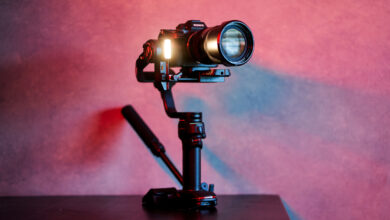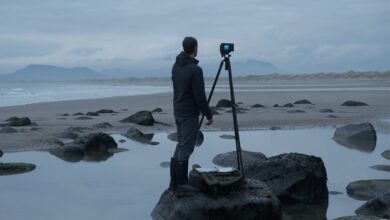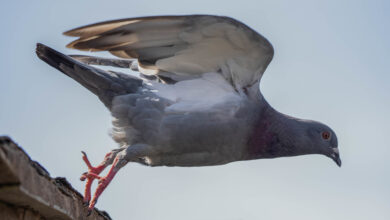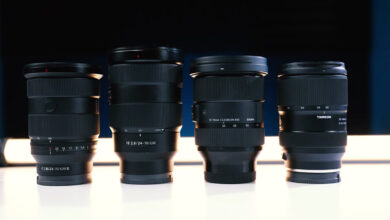I will die on Fujifilm hill
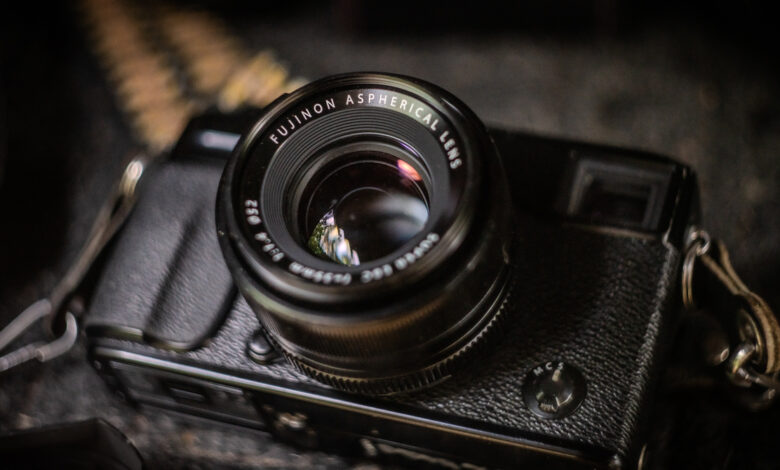
Willie Nelson has been playing the Martin N-20 nylon-string acoustic guitar since 1969. Serial number 242830. This instrument is an eternal flame of creative freedom, unique and beautiful—just like Willie.
A more mainstream musician might insist that no true professional should stoop to plucking those strings. You won’t get any technical or sonic benefit from a 50-year-old guitar with a giant hole in its belly.
None of that mattered to Mr. Nelson. He kept his old guitar because nothing else sounded like the Trigger. For Ishmael and me, it’s been the same for the past three years.
I didn’t start shooting with the Fujifilm X-Pro 1 because I wanted the latest and greatest camera body. I didn’t choose to love a camera that came out over a decade ago.
It all started because I was looking for the right tool for a very specific job. When I got my hands on the X-Pro 1, suddenly everything I had read and heard about this humble camera made perfect sense.
I get it. I get it. Like Willie and Trigger, I’ll stay with Ishmael until the end.
But why?
I am a professional photographer. Yes, I get compensated (usually in cash) for all my photographic antics. I am even considered an expert in the craft in some highly educated circles.
I shoot everything. For many years, my primary digital camera body consisted of a Sony full-frame mirrorless camera. My backup bodies were a series of Canon full-frame and crop sensor DSLR bodies.
I’ve tested every medium format mirrorless digital camera system Hasselblad has ever made, along with five of their stunning XCD lenses. I’ve reviewed a total of 34 lenses from Tamron, Sigma, and Rokinon. GoPro has insisted on keeping me around as a sponsored athlete, no matter how unathletic my physique.
After all this, here I sit, content at the end of my little photographic rainbow with the X-Pro 1. Who would have thought that this humble, outdated, old 16 megapixel camera would become my personal treasure?
Fight me
The Fujifilm X-Pro 1 paired with the Fujinon 35mm F/1.4 R Super EBC lens is my all-time favorite digital camera, and is, after all, the ultimate death camera setup. Period.
Go ahead. Fight me. I’ll die on this hill. I’m not the only miserable person betting his life on the advantages of the X-Pro 1 (or X-M1/X-E1).
Yet for every Fujifilm evangelist, there is a disbeliever. For every Fujifilm believer, there is another who believes that belief is nothing more than self-inflicted delusion, tunnel vision, or brand fanaticism.
There are a lot of articles and videos circulating the internet with conflicting views when it comes to early Fujifilm cameras and their first generation X-Trans digital sensors.
You can find an interesting analysis on this topic right here on Fstoppers.
My relationship with the Fujifilm X-Pro 1 is a personal one. I share the same feelings that many others have about the camera’s color output and sheer usability. However, my love for my Fuji runs deeper than the numbers “on paper.”
In my opinion, the performance of the X-Pro 1 is nothing short of magical. Let me give you the highlights of why, for me at least, nothing else can produce images quite like the Ishmael.
X-Trans Sensor
Here it comes.
Talking about the differences between Fuji X-Trans sensors is like sitting in a tank of gasoline and lighting a match. However, there has been enough research and enough debate to warrant mentioning it at least once more.
As many of you may know, Fujifilm released the first camera using the newly developed X-Trans sensor in March 2012. This sensor happened to be incorporated in the X-Pro 1.
The X-Trans sensor was different from the much more common “Bayer filter array” CMOS sensor (and earlier CCD sensor) found in most digital cameras at the time.
If you’re completely unfamiliar with Fujifilm APS-C digital sensors, the shorthand version is an X-Trans sensor which is built with a different array of pixels.
The red, blue, and green sensitive areas are arranged differently and in different proportions. X-Trans sensors have larger green-sensitive pixels and do not have an optical low-pass filter, commonly referred to as an “anti-aliasing” (AA) filter.
According to Fuji, the X-Trans array is said to eliminate the need for an AA filter, thereby increasing overall resolution and improving color fidelity.
Not including an AA filter has its drawbacks, namely increased moiré and false color. Some photographers also claim that X-Trans sensors (especially the first generation) produce a “waxy” skin effect in portraits at high ISOs.
The complete omission of the AA filter is nothing new for digital camera sensors. Cameras like the Sony a7R series and Canon 5DsR also omit the inclusion of an AA filter.
Since AA filters essentially “smooth out” the image produced by the sensor, removing them should, at least in theory, yield the maximum possible image quality.
Fujifilm claims that thanks to the X-Trans array, no AA filter, proprietary color algorithms, and from what I gather a little extra magic sparkle, their APS-C sensors are on par with full frame sensors in terms of perceived resolution, digital noise, and color reproduction.
Of course, any claims of actual difference between X-Trans sensors and other sensors on the market (including other X-Trans) are entirely subjective.
Some photographers claim that the images produced by the first generation X-Trans sensors are just a matter of taste, and I tend to agree. There seems to be equal evidence to support and refute this assessment. Interesting.
Hybrid optical viewfinder
See that little switch? It’s right there on the front of the X-Pro 1? It’s the real reason I decided to buy this camera over anything else. It’s the optical viewfinder selector.
Yes, this digital camera has a true optical viewfinder. Well, perhaps more accurately, a “hybrid” optical viewfinder. That is, a viewfinder that can switch back and forth between a fully electronic display and an optical display, as well as a sort of “tweener” combination of the two.
I’m going to reveal my personal preference here. I’m pretty used to rangefinder film cameras. I’ll compare my Electro 35 GSN to anything. If it’s good enough for Spider-Man, it’s good enough for me.
Like the gorgeous Yashica film cameras, the Fujifilm X-Pro 1 has an optical viewfinder. While it’s not a real viewfinder, it feels like one.
The camera’s electronics overlay a basic selection of exposure settings along with a left-mounted EV meter. When viewed with a native X-mount lens, the photographer is greeted with additional focusing and framing guides.
The ability to switch between optical, electronic, or LCD viewfinders all on the same camera still makes me feel warm and fuzzy inside.
If I’m feeling normal, I use either the EVF or the LCD. On days when I’m feeling like a total psycho, I switch to the OVF and turn off the LCD for the “as close to film as possible” experience.
An added benefit is that with all screens off, the Fujifilm X-Pro 1’s battery becomes virtually immortal.
Fuji has recently embraced the no-chim-no-show concept with the X-Pro 3 (and possibly X-Pro 4) by incorporating a flip-out LCD screen. This effectively allows photographers to pretend that their digital camera doesn’t have a rear screen option.
JPEG is insanely pure
There was a time when I only shot raw, nothing but raw files, regardless of camera, work or subject, my menu never had raw format. That all changed when I got the X-Pro 1.
The colors determined by Fuji’s so-called “color science” are stunningly beautiful. Whatever those early color algorithms figured out is still true, at least in my opinion.
Compared to its successors, the X-Pro 1 has a more sparse menu system.
While the options may seem simple, the built-in film formulas that Fuji is known for deliver enough power to deliver a lifetime of creativity.
Options for light and dark tones, color and sharpness along with the ability to adjust noise levels offer a huge amount of creativity to JPEG images.
All of this is built around Fujifilm film simulation baselines, which, you guessed it, are like the old film guy’s house. In fact, I ended up getting so comfortable with it that I now shoot only JPEGs with the X-Pro 1.
Before Ishmael, I scoffed at the idea of ever shooting raw, especially for my landscapes.
I don’t need to shoot RAW with my Fuji. Even the SOOC JPEGs from the X-Pro 1 are incredibly close to the finished product as soon as they’re written to the card. This is largely due to the wide range of in-camera image settings, which give me most of the look I want before post-processing.
Once those custom settings are saved, they stay saved. I know exactly what I get every time.
Wide range of lens options
The conclusion to this love letter to Fujifilm is a common trait among many mirrorless digital cameras today. Like any digital SLR without a mirror box, the X-Pro 1 has the ability to exploit a near-infinite range of both classic and modern lenses.
With a focal flange distance of just 17.7mm, the X-Pro 1 allows virtually any DSLR, SLR or rangefinder lens to be mounted with the appropriate adapter. Fujifilm likes classic lenses in M39 and M42 screw mounts as well as, dare I say, even Leica L mounts.
The original lens that came with my X-Pro 1 was the gorgeous (and radioactive) cream-colored Yashinon 50mm F/1.4 DS-M.
This is not to say that the original Fujifilm XF lenses aren’t great. I actually shoot with modern Fuji lenses as well.
Currently holding a place in my heart as the “always on” lens for the X-Pro 1 is Fujinon 35mm F/1.4 R Super EBC Lens.
The 35mm F/1.4 R Super EBC is a great fit for almost any room. I use it for everything. It’s a near perfect prime lens and performs well in low light with just the right mix of contrast and sharpness.

Fujinon lenses have solid build quality and are priced accordingly. However, there are certainly more expensive lenses out there. I will say that any investment in a native Fujifilm lens is worth the initial pain.
A beautifully useless gesture
For all my passionate love for the Ishmael and other “old” Fujifilm cameras, it’s important to recognize one unavoidable truth: they’re all meaningless.
The question of the true benefits of the first generation X-Trans sensor will forever be debated. By our very nature, photographers are subjective, and none of us really share the same opinion, nor should we.
Some cameras embed themselves in our souls like splinters. Once they are in, it is hard to get them out. They say the best camera is the one you carry with you. I say the best camera is the one you want to use. I say the best camera is the one you enjoy taking pictures of.
I don’t play guitar, but I certainly know how Willie feels about the Trigger. If we’re being honest, I think most photographers do, too. Given enough time, hopefully we’ll all stumble across at least one camera that lets us sing with our real voices.
That camera could be anything, any brand, any age, any model. Today, for me, it’s the Ishmael—the Fujifilm X-Pro 1.
What is your?
See some photos and learn more about Willie Nelson’s vintage guitar in Texas Monthly Magazine.
